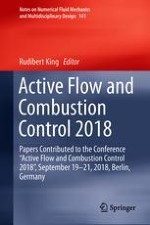The book reports on the latest theoretical and experimental findings in the field of active flow and combustion control. It covers new developments in actuator technology and sensing, in robust and optimal open- and closed-loop control, as well as in model reduction for control, constant volume combustion and dynamic impingement cooling. The chapters reports oncutting-edge contributions presented during the fourth edition of the Active Flow and Combustion Control conference, held in September 19 to 21, 2018 at the Technische Universität Berlin, in Germany. This conference, as well as the research presented in the book, have been supported by the collaborative research center SFB 1029 on “Substantial efficiency increase in gas turbines through direct use of coupled unsteady combustion and flow dynamics”, funded by the DFG (German Research Foundation). It offers a timely guide for researchers and practitioners in the field of aeronautics, turbomachinery, control and combustion.
